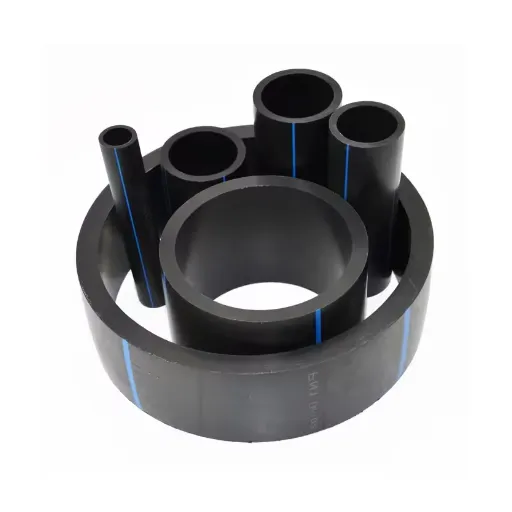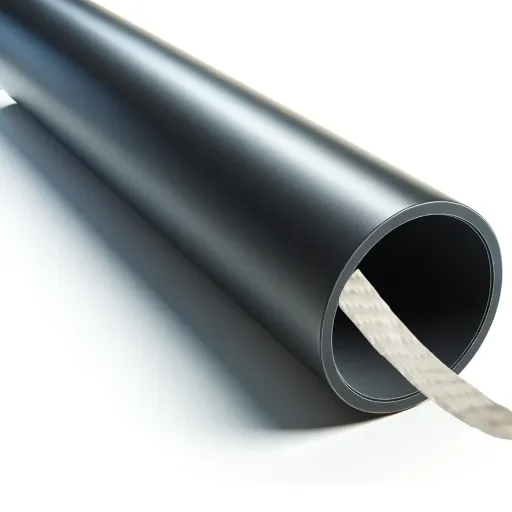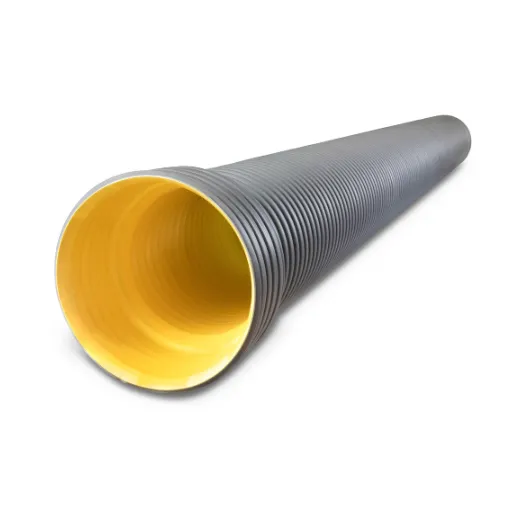Proper installation of HDPE (High-Density Polyethylene) pipes is critical to achieving long-term performance, durability, and efficiency in a variety of applications, including water distribution, gas transmission, and industrial piping systems. This comprehensive guide is designed to provide you with expert-backed methods and best practices for ensuring a flawless HDPE pipe installation. Whether you’re a seasoned professional or new to the field, this article will equip you with detailed insights into techniques, tools, and common pitfalls to avoid. By the end, you’ll have a clear understanding of how to implement HDPE pipe systems that stand the test of time and meet the highest industry standards.
What Tools and Materials Do You Need for HDPE Pipe Installation?
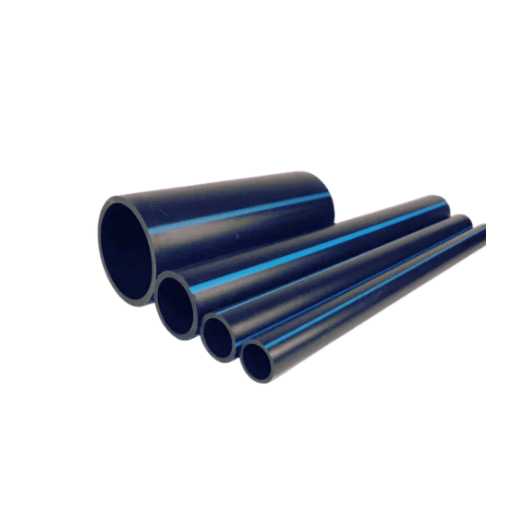
Essential Equipment for Cutting and Fitting HDPE Pipe
When dealing with HDPE Pipes, having the most suitable tools increases precision and efficiency, and completeness. Below is a complete list of tools that enable effective fitting and cutting:
- Pipe Cutters: Crowned with the title of the ‘most suited’, Pipe Cutters caters for precision and accuracy. Most users prefer the rotary style cutters or guillotine style cutters due to the ease of use and precision. Also, the HDPE Pipe Cutters achieve different types of cuts and are manufactured to execute precise cuts with no stray flakes.
- Butt fusion machines: A high-quality butt fusion machine must be equipped with heating plates, clamps, and shoulder fusion capability to properly butt fuse weld HDPE pipes, the industry’s most dependable approach for joining pipes.
- Electrofusion tools: In the absence of butt welds, precised bolts can get the job done. These machines ensure that a pre-fitted coupling is bonded using controlled electrical current, making it feasible for narrow or difficult preset relations.
- De-beading tools: The interior and exterior de-beading tools are key requirements that work alongside the welding to ensure the artefact is devoid of retaining materials around the seams.
- Pipe rollers and screw supports: Long runs of HDPE pipes and the rest require screw supports to easily align and for the rest not to be damaged during installation. Proper handling during installations is needed.
- Alignment Clamps: Alignment clamps are vital for preserving correct positioning throughout the welding procedure, thus ensuring the joint is homogeneous and does not get misaligned.
- Portable Generators: Numerous installations of HDPE do occur in isolated regions where a stable power source is not available. High quality portable generators are essential in providing power for fusion machines and other electrical devices.
- Measuring and Marking Tools: Correct installation is a consequence of thorough preliminary work, which includes measuring. Accurate measuring tapes, marking pens for HDPE marks, and laser distance meters will aid in planning the cuts graphically, together with severe surface planers.
The application of these tools makes the installation of the HDPE pipes easier while ensuring compliance with regulatory requirements. Proper equipment in the hands of skilled operators ensures the construction of durable and high-performance piping systems that efficiently withstand environmental and operational conditions.
Bedding Materials and Backfill Requirements for Direct Burial
Proper selection and preparation of bedding and backfill materials are essential to maintain the structural integrity and lifespan of HDPE piping systems in direct burial applications. The bedding material, usually composed of sand or graded granular material, offers a stable foundation for the pipe by evenly distributing the load and minimizing point loading or deflection of the pipe. Bedding should consist of 4 to 6 inches of compacted granules or sand placed below the pipe to ensure proper support.
The requirements on backfill materials are just as rigorous to maintain the pipe’s position and avoid any long-term deformation or damage. The first backfill, often called haunching, should contain clean, angular, compactable material that will fill the unoccupied spaces around the pipe for proper load transfer. Of note, the backfill particles should be less than 1.5 inches in diameter to prevent localized high-stress areas on the pipe surface made from HDPE. Following the haunching, layers of backfill are placed to achiethe ve final grade, usually non-cohesive material with good leveling properties is used.
Following these requirements is important in protecting pipeline structures from settlement, external vehicular pressure, and other loads that may degrade system performance over time. These recommendations make certain that the piping system made from HDPE can withstand relatively harsh conditions while being buried.
Fusion Equipment Options for Joining HDPE Pipe Sections
The successful butt fusion of HDPE pipe sections depends on the correctly selected and used fusion equipment to ensure high strength and leak-proof joints. The primary fusion methods: butt fusion and saddle or electro fusion, each requiring specialized fusing equipment tailored for specific project requirements and environmental conditions.
- Butt Fusion: To butt fuse receives two HDPE end pipes, they are heated to a specific temperature and pressed under certain conditions. Typical butt fusion machines are composed of a hydraulic or manual clamping device; two heating plates which are set to give uniform surface temperatures of more than 400 degree Fahrenheit (or 204 degree Celsius); and a controlling unit to regulate important factors like the duration of heating and pressure applied during fusing.
- Electrofusion: The process uses coupling fittings that have electrical heating elements built into them. Once plugged into an electrofusion processor, the heating elements melt the pipe and fitting in a controlled manner and bind them together. This approach is best for joining pipes in tight areas or for repairing existing pipelines. The most recent advances in electrofusion technology include Wi-Fi-enabled processors that send data for real-time tracking and documentation in the cloud.
- Saddle Fusion: Saddle fusion is a highly specialized process used for attaching branch connections to the main HDPE pipelines. This method requires a saddle fusion machine that consists of heating instruments and precision alignment clamps to fuse the saddle fitting to the main line. Modern saddle fusion equipment is fitted with automated systems, which drastically reduce operator error and ensure consistent results, even in field applications.
Every type of fusion equipment is required to follow USA regulations such as ASTM F2620 for butt fusion and electrofusion to assure compatibility and performance. Making certain that operators are competently trained and certified also remains one of the most critical factors of optimal fusion integrity and long-term durability of HDPE piping systems.
What Are the Different HDPE Pipe Installation Methods?

Trench Installation: Best Practices for Direct Burial
Like with any other form of mechanical work, trench installation for direct burial of HDPE pipes requires a specific form of planning and working techniques for safe and intact long-term use. The procedure starts with basic excavation where the trench depth and width follow the pipe’s diameter, head soil, and load-bearing needs. Also, enhancement of a minimum cover of 24” above the pipe is ideal for protection against surface loads, unless site-specific conditions dictate otherwise.
An even bottom free from sharp, pointed rocks or other hazardous materials that could threaten the integrity of the pipe’s surface is a must. A leveling layer, which consists of sand or crushed stone granular material that is compacted into a 4 to 6 inch layer, is essential to evenly spread and cushion loads. The pipe also needs to be backfilled in layers where granular materials are finely split into less than twelve inches above the pipe’s crown. Each layer, irrespective of backfill or lowering, must be compacted to the project’s pipe support percentage plus alignment to provide adequate forward support to achieve supporting levels.
To attain optimal performance, the soil classification and compaction guidelines for buried flexible thermoplastic pipe must be followed. Make sure that groundwater is considered during installation for the prevention of floating or deformation of the pipe. Best practice adherence greatly reduces the chances of failure resulting from settlement, external loading, or other environmental conditions.
Horizontal Directional Drilling (HDD): When and How to Use It
Horizontal Directional Drilling (HDD) is a trenchless technology method widely used for the placement of pipes, conduits, and cables under natural or man-made barriers like rivers, roads, and urban areas. This method is especially advantageous in situations where traditional open-cut techniques are environmentally, logistically, or economically impossible. HDD consists of three main steps: pilot hole drilling, reaming, and product pipe placement. This method guarantees minimal surface disturbance, lower environmental damage, and more accurate provision of utility space.
Before the application of HDD, soil conditions, pipe type, and layout of the bore hole must be considered. HDD is applicable in the most stable soil types, which include clays and soft rocks. Sophisticated systems using drilling fluids are required since they aid in stabilizing the borehole, cooling the cutting head, and moving cuttings to the surface. Current industry standards are available for the instruction of pipe installation stress analysis and operational procedures for the prevention of tensile overstress during long or deep installations.
Factors like HDD utility project requirements also largely influence the choice of HDD. This is because it has exceptional performance in installing utilities under delicate environments or congested areas where significant cutting or digging is prohibited. Operators use advanced steering and tracking technologies to guarantee accurate pipe placement in intricate bore path geometries. When coupled with continuous data monitoring and real-time changes, HDD meets the critical engineering needs of most utilities construction projects.
Trenchless Methods: Pipe Bursting and Slip Lining Techniques
Pipe bursting is a trenchless method that replaces the existing pipeline by splitting the old pipe and pulling a new one into the space created. This technique is particularly useful for urban areas or places with limited access due to the enclosed surface area getting less disturbed. A bursting head or expander is used for the process, which breaks the old pipe while simultaneously putting the new pipe in place, which leads to the fragments of the old pipe getting pushed into the soil. To prevent complications, proper assessment of material compatibility and soil condition is crucial for meeting the desired outcome.
As for slip lining, it is also a trenchless method that restores functionality by placing a new pipe with a smaller diameter inside the old one. This technique is best suited for structural damage or leaks present in the current pipe system. Slip lining is often done with the help of HDPE (high-density polyethylene) and PVC because of their strength and anti-corrosive nature. Due to the new pipe getting inserted, the internal diameter of the conduit receiving repairs gets slightly reduced, but advancements in materials and standards, and flow efficiency often cancel this out.
When these techniques are blended with contemporary engineering measurements and logical site evaluation, it guarantees the protection and longevity of service pipelines. Both methods are economical and ecologically responsible in utility construction, especially when a marked reduction in excavation is required.
How Do You Properly Install HDPE Pipe in a Trench?

Site Preparation and Trench Excavation Guidelines
Correct site prepartition and trench digging are essential steps needed to guarantee an effective implementation of HDPE (High-Density Polyethylene) piping systems. Before anything is done, a clear site assessment, especially the surrounding region’s subsurface features, possible hindrances, and the stratification of soil, must be noted. Trenching must be done to the depth and width with a facial cut that increases height and width for the pipe as well as extra space that will be needed for bedding materials and aligning strapping.
The trench bottom should be cleaned of any debris, large boulders, and sharp materials that could hamper the pipe’s integrity or compromise the bedding’s stability. Support uniformity should be achieved with a well-compacted and consistent bedding layer, often a granular material like sand or gravel, having a maximum particle diameter of 12.5 mm. Such measures mitigate the risk of differential settlement, a condition that can stress the pipe at various intervals along its length. More sophisticated techniques require bell holes to be made at joint areas to limit the bending stresses that arise during assembly.
Traffic load considerations dictate that reinforcement bedding or geotextiles be factored into the cover thickness when evaluating trench depth. If these rules are followed, HDPE pipe installers will meet industry standards regarding safety and durability while improving system reliability, functionality, and service life.
Proper Pipe Placement, Bedding, and Backfill Techniques
Attention to detail in pipe placement, bedding preparation, and backfilling will ensure optimum performance and longevity of any HDPE pipe system. Primarily, pipes must be placed in an axial position to prevent angular deflection and decrease stress concentrations at the joints. Moreover, the backfilled pipe must receive uniform support along the barrel without any sharp indentations, which could lead to HDPE deformation with time.
All bedding materials must retain homogeneity and must be void of sharp or jagged edges that could damage the pipe both during and after installation. Coarse sand and crushed stone are common recommendations, along with attaining a minimum width of four to six inches underneath the pipe to guarantee both load and distribution uniformity. The right bedding will also protect pipes from settlement discrepancies while ensuring that proper gradients are maintained.
Placement of backfill must address issues of compaction as well as the stability of the pipes. The first backfill lift above the side supports or haunches is placed. It must be compacted gently but thoroughly to provide uniform support. Specialized mechanical compactors may be employed for granular materials. Each subsequent layer of backfill must be packed tighter than the previous one, and the project-specific loading conditions dictate material selection. For shallower trenches but with high traffic, Controlled Low Strength Material (CLSM) is also a backfill option due to its ease of placement and sufficiency in strength.
Attention to detail in planning and selecting the right materials, along with observing the installation guide, allows project engineers to increase the efficiency and strength features of HDPE piping systems.
What Are the Steps for Joining HDPE Pipe Sections?
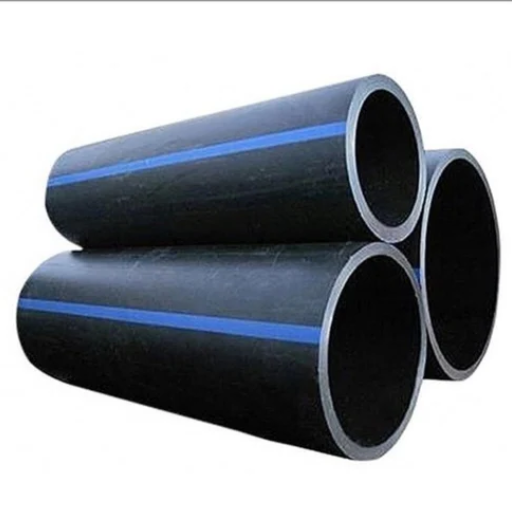
Electrofusion and Heat Fusion Welding Techniques
Electrofusion and heat fusion welding are important techniques used to join sub-sections of High Density Polyethylene (HDPE) pipes, ensuring the connections are both leak-proof and structurally sound. Each technique is tailored towards providing the material integrity and long-lasting durability for all types of installations.
- Electrofusion Welding: This method involves using electrofusion fittings that have built-in heating elements. These heating elements produce an adequate amount of heat to melt the inside of the fitting as well as the outside of the HDPE pipe. Once the joint cools, it becomes solid and blends into the rest of the structure. This results in a connection that can withstand pressure and is very durable. Electrofusion is particularly useful in tight spaces and complicated configurations that make it hard for traditional fusion machines to operate.
- Welding through Heat Fusion: This form of welding involves heating to the point where it softens the ends of the pipes and pressing them together to create a bond without a seam. Heat fusion can be further divided into three distinct categories: butt fusion, socket fusion, and saddle fusion. Butt fusion is the joining of two pipes at their ends whereby they are aligned, heated and fused, usually with a heating plate. In socket fusion, pipes and other fittings to be joined are placed in specially designed sockets, and the sockets are heated to melt the joint. Saddle fusion is used for branch connections to a main pipeline. The joint created from the heat fusion process is as strong or, in many cases, stronger than the original pipe material. This guarantees reliability even under severe conditions.
Both methods have strict governing marks and procedural benchwork which guarantee consistency and accuracy during the joining processes. Precise control of the temperature and the alignment of the pieces, as well as checking the melt patterns greatly contribute towards the quality of the joint. The use of best practices in combination with the latest technology promotes high-performance systems and reduces the risks of leaks and failures.
Mechanical Fitting Options for Different Pipe Diameters
The installation and maintenance of high-density polyethylene (HDPE) piping systems depend on mechanical fittings greatly. They are also reliable at different pipe diameters. For smaller diameters, usually from 20 mm to 63 mm, compression fittings are popular because of their quick installation and low tool requirements. These fittings make use of a compression ring and a nut to tighten a waterproof seal without heat or special tools.
Higher flow rates and pressures can be accommodated with the use of flanged fittings and clamp couplings, suitable for intermediate pipe diameters, 63 mm to 160 mm. Pipes that are often disassembled for maintenance such as inspection or servicing, benefit from flanged fittings because they are easy to access. High pressure pipes are made more durable with axial load resistant joints made from clamp couplings.
As the diameter of the pipes increases above 160mm, more sophisticated mechanical joints such as restrained flange adapters and bolt-on saddles are used. These fittings are designed to deal with large industrial and municipal construction projects because they can endure great deal of force thermally and mechanically. These multi-segment couplings also relieve the solidus-like stress in oversized pipes, which averts stress concentrations and failure in piping systems.
The mechanical fitting will most certainly cope with requirements due to advances in modern biasing techniques. Industry certifications enable guarantees regarding reliability irrespective of diameter and context of usage. With the proper fitting type selection corresponding to pipe size and application selected, engineers can achieve high performance with low effort during installation and maintenance.
Ensuring Watertight Connections in HDPE Piping Systems
Avoiding leaks in HDPE piping systems is critical for leak detection, system failure, or even environmental contamination. The heat fusion technique, such as butt fusion or electrofusion, is one of the best ways to avoid these leaks and astounding any damage. These processes use specialized equipment to lock or melt the pipe ends and then the fittings, so upon cooling, there is a seamless connection between the two parts.
Another fitting that provide accurate seal such as seal integrity is, mechanical fittings which work with ease for installation and disempoly. These fittings use heat, gaskets, and special eqiupments to achieve close tough locking which holds all the valves together closely. This type of fitting further provdes resistance to elastomeric materials which allows the piping to deal with rapid changes in pressure.
For optimal performance purposes, following installation guidelines must be observed. In addition, there must be pressure testing and inspection procedures to check connections within actual operating conditions. The incorporation of proper installation procedures and quality HDPE parts helps attain long-term reliability and resistance to leaks throughout many industries.
What Maintenance Is Required for HDPE Pipe Systems?
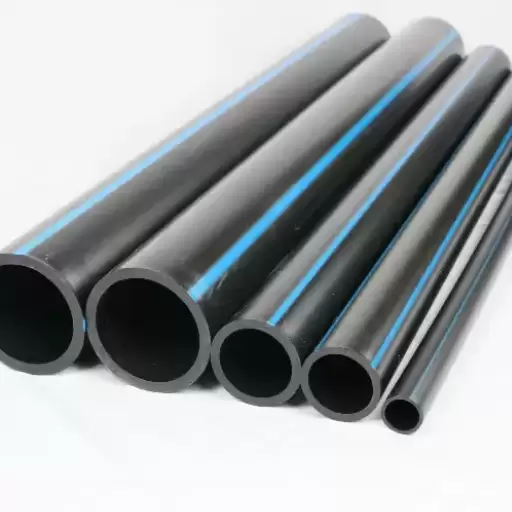
Long-Term Care to Ensure the Longevity of HDPE Pipelines
Regular management and monitoring routines are necessary for the appropriate maintenance of HDPE pipelines so that they can endure long-term use. These pipelines require periodic inspections to identify wear, potential degradation, or any external impact that could compromise their structural integrity. Significant factors include assessing the condition of external damage to external joints, evaluating bolted connections, and confirming proper alignment of the pipeline during operation to check for sagging.
Inspection systems employing sophisticated tools such as ultrasonic diagnostics and thermal imaging systems provide detailed analysis of the pipes’ condition and therefore assist in the identification of less pronounced problems which, if neglected, may develop into serious breakdowns. Additionally, non-abrasive methods must be used in the removal of deposits on the surface of the pipelines to avoid damaging the protective coatings. Shielding from environmental damage caused by UV sunlight for exterior installations should be accomplished by protective burial depth or covering the pipelines with a special coating.
For harsh or reactive chemicals the medium being transported is, regular checks need to be made concerning the chemical compatibility of the pipe. In these operating conditions, some controlled factors, for instance, the flowing medium’s pressure or rate of flow and temperature need to be monitored, logged, and checked against predefined guidelines along with the monitored controlled factors for significant changes to identify stress limit.
Following these guidelines and adopting predictive maintenance techniques would further minimize operational downtimes while maintaining compliance across various sectors, including construction, manufacturing, and transportation, thereby improving the performance of HDPE pipelines.
Handling Repairs and Modifications to Existing HDPE Pipe
A methodical and technical approach is vital while undertaking the maintenance and upgrading of pipelines constructed with High Density Polyethylene (HDPE). This ensures that there is no damage to the structure and the company policies are upheld. Conducting high-density polyethylene (HDPE) pipe repairs begins with inspecting the area of concern. The Non-Destructive Testing (NDT) Techniques are the most appropriate choice in this case as it involves Ultrasonic Scanning, which is capable of evaluating the damage and determining whether the section is repairable or needs complete replacement.
In case of minor damage to the pipe, the best answer is the steps below, which restore pipeline performance with no compromise to the level of operation. For starters, the electrofusion and butt-fusion welding techniques both serve this very purpose. Electrofusion welding is a pre-fab technique where fittings equipped with wires are applied to the sections of the pipe that need to be bonded, and power is sent to generate heat, subsequently electrofusing the pipes. This requires the joining of pipe ends and injection of a heated plate in the middle, creating a smooth joint, termed butt fusion. The most outstanding feature of both techniques is that they do not negatively affect the pipeline’s pressure and resilience after it has been repaired.
Careful strategy is vital if new branches are being created or if there are changes in the routing of the pipes. Specific industrial tools are needed to make clean cuts and smooth edges as they prevent proper fusion, and proper measurements make alignment possible.
Valuable information regarding the state of the pipelines is provided by acoustic emission sensors or fiber optic monitoring systems that aid in early detection and real time monitoring which lessens the need for repair later on. Addressing these issues assures efficient and reliable operation of HDPE pipelines over multiple industrial sectors.
References
Frequently Asked Questions (FAQs)
Q: What are the common methods for HDPE plastic pipe installation?
A: The most common methods for HDPE plastic pipe installation include open trench installation, horizontal directional drilling (HDD), pipe bursting, and slip lining. Open trench is the traditional method where a trench is dug, the pipe is laid, and then backfilled. HDD is a trenchless method ideal for road crossings or environmentally sensitive areas. Pipe bursting replaces the existing pipe by fragmenting it while simultaneously pulling new HDPE pipe into place. Slip lining involves inserting a new HDPE pipe into an old, deteriorated pipe. Each method has specific applications depending on site conditions, budget constraints, and project requirements.
Q: How do I properly prepare an HDPE pipe for water supply installation?
A: To prepare HDPE pipe for water supply installation, first inspect the pipe for damage. When you need to cut the pipe, use a pipe cutter or hacksaw, ensuring cuts are square and clean. Remove any burr with a reamer to prevent flow restrictions and potential system contamination. Clean the pipe ends thoroughly to be clean and free of dirt or debris. For fusion joining, prepare the surfaces according to the installation manual guidelines. Mark insertion depths for mechanical fittings. Always follow manufacturer specifications, as proper preparation is crucial to ensure the system’s integrity, especially for potable water applications.
Q: What precautions should I take when installing HDPE water pipes in extreme weather conditions?
A: When installing HDPE water pipes in extreme weather conditions, several precautions are necessary. In cold weather, allow the pipe to acclimate to ambient temperature before installation, as HDPE becomes less flexible in cold weather. Avoid excessive bending beyond the manufacturer’s recommended bend radius. In hot weather, account for thermal expansion by allowing slack in the line or using expansion joints. Schedule fusion welding during moderate temperatures when possible, as extreme weather can affect joint quality. Protect pipes from direct sunlight during storage and installation time. For below-freezing environments, ensure adequate burial depth below the frost line to prevent freezing and pipe damage.
Q: How should I prepare the trench for HDPE pipe installation?
A: For proper HDPE pipe installation, trench preparation is critical. Excavate to a depth that allows for minimum cover requirements (typically 3-4 feet for water mains, less for service lines). Ensure the trench bottom provides a stable base that’s free from rocks and sharp objects. Line the trench with sand or fine gravel bedding material (4-6 inches) to support the pipe evenly. In areas with poor soil conditions, additional bedding material may be necessary. For traffic areas, follow deeper burial guidelines. Make the trench width at least 12 inches wider than the pipe diameter to allow for proper compaction equipment access. Slope or shore trenches according to safety regulations to prevent collapse during installation.
Q: What are the best practices for testing HDPE polyethylene pipelines after installation?
A: After installation, HDPE polyethylene pipelines should undergo rigorous testing to verify system integrity. The primary method is the hydrostatic test, where the line is filled with water and pressurized to 1.5 times the operating pressure for at least 2 hours. Monitor for pressure drop, which indicates leaks. For drainage and sewer applications, conduct deflection testing to ensure pipes haven’t deformed beyond allowable limits (typically 5% maximum). Perform visual inspections of all joints and connections. For sanitary systems, additional leak testing using air pressure may be required. Document all test results according to project specifications. Allow newly installed systems to stabilize before final testing, as HDPE may expand slightly under initial pressurization.
Q: What backfilling techniques should be used for HDPE pipe installations?
A: When you backfill the trench for HDPE pipe, use proper techniques to ensure long-term performance. First, place initial backfill of sand or fine gravel (free from rocks larger than 1/2 inch) to 6 inches above the pipe. Compact this material carefully around the pipe to provide uniform support around the entire circumference without damaging the pipe. Continue backfilling in 6-8 inch lifts, compacting each layer to 85-95% standard Proctor density. Use native soil for final backfill unless it contains large rocks or organic material. In areas subject to heavy loads, consider using flowable fill or controlled density fill. Proper backfilling prevents pipe deflection, settlement, and potential future failure.
Q: How do I connect HDPE pipes to other pipe materials?
A: Joining different pipe materials to HDPE requires specialized fittings designed for material transitions. For connecting to PVC, use mechanical compression fittings or flanged adapters with appropriate gaskets. When joining to ductile iron or steel pipes, mechanical joint adapters or flange adapters are commonly used. For concrete connections, special concrete-to-HDPE adapters with watertight seals are essential. Electrofusion couplers with appropriate transition pieces work well for certain applications. Always account for the different expansion rates between materials and use flexible connections where necessary. Follow manufacturer guidelines for proper installation and torquing of bolted connections. These various methods ensure watertight connections while accommodating the different physical properties of each material.
Q: What are the advantages of HDPE pipes over traditional piping materials for water and drainage applications?
A: HDPE pipes offer numerous advantages over traditional materials for water and drainage applications. They’re corrosion-resistant, eliminating issues that plague metal pipes like ductile iron. HDPE has exceptional chemical resistance, making it ideal for aggressive soil conditions and various effluents. The fusion-welded joints create a leak-free, monolithic system, reducing installation time and maintenance costs. HDPE’s flexibility allows for installation in curved alignments without fittings and provides superior resistance to seismic activity. Its smooth interior surface improves flow characteristics and resists buildup. With a service life exceeding 50-100 years and recyclability, HDPE is environmentally superior. Additionally, HDPE’s resistance to freezing, UV damage, and extreme weather makes it suitable for diverse environmental conditions.




